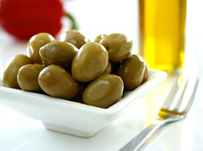Spanish Language Guide (2a): Spanish Culture in Spain
Wednesday, 27th June 2007

Sarah Gooding, Editor at Cactus, takes a look at the fascinating world of Spanish culture in Spain
To describe ‘Spanish culture in Spain’ would take many more words than we have here. But if we can at least give you a flavour of this vibrant, passionate country and the incentive to soak up more yourself, there is a fascinating culture of infinite layers just waiting to be explored.
Of course, visiting Spain itself is arguably the best way to live and breathe its language and culture. But if you are short on time or money, you can enjoy many aspects of Spanish culture from your own home, through books, DVDs, CDs, TV and radio, and more. It’s like learning a language, though - if you can actually be there, living and breathing the language and culture, your experience will be vastly enhanced. Here we have listed some popular aspects of Spanish culture, although these are by no means exhaustive…
Spanish Pace of Life
One of the first things you often notice when you go abroad is the pace of life. In many ways the Spanish lifestyle can seem fast-paced and frenetic – it is a land of passion and drama, the people talk quickly and loudly, and they stay out way into the early hours socialising. At the same time, the country exudes an enviable laid-back lifestyle, where long lazy lunches are the norm, a siesta afterwards perfectly acceptable, and a leisurely family stroll on a Sunday routine. In this sense, Spain seems to have achieved an almost impossible harmony, balancing tradition with modernity, fast with slow, noisy with tranquilo.
Flamenco & Bull-Fighting
Of all Spanish traditions, perhaps the most famous are the ancient but still-practised arts of flamenco and bull-fighting. Dressed up in their respective finery and with years of practice, the dancers and matadors of these age-old traditions are true masters of their trade. This is their profession, and they are respected for it – irrespective of any controversy that bull-fighting in particular may provoke elsewhere. In fact la corrida, the bullfight, is considered by its fans to be an art rather than a sport, and there is a strict order to proceedings to ensure that no detail is missed.
Football
At the time of writing, Spain have just become European champions after beating Germany in Euro 2008 – an event greeted by predictably wild celebrations both nationwide and worldwide. If there’s one thing the Spanish know how to do, it’s party. But the country does not need to win a cup to show its passion for football. Football is ingrained in the Spanish psyche, and anyone lucky enough to catch a game with the likes of Barcelona or Real Madrid will be treated to an electric, unforgettable atmosphere.
Spanish Fiestas
For other excuses to celebrate, you need look no further than Spain’s impressive calendar of festivals, or fiestas. There are innumerable festivals all over the country, in every city, town and village, but among the most famous are:
• Las Fallas de San José – fireworks and burning of the fallas (papier-mache effigies) in Valencia (March)
• Semana Santa – Holy Week (April), nationwide
• Feria de Abril – Seville’s April Fair, two weeks after Easter (April)
• Moros y Cristianos – commemoration of the Battle of Alcoy, near Alicante (April)
• Cruces de Mayo – Granada and Córdoba (May)
• San Isidro – Madrid’s largest bullfight festival (May)
• San Fermin – Pamplona’s famous running of the bulls (July)
• La Tomatina – the world’s largest tomato fight, in Bunyol, near Valencia (Aug)
• Festes de la Merce – Barcelona’s celebration of its patron saint (Sept)
• Cava Week – Cataluña’s celebration of its well-known version of champagne (Sept)
Spanish Food & Drink
No festival would be complete, of course, without a fine spread of Spain’s typical food – from delicious local tapas (bite-size appetizers, in larger portions known as raciones) to paella (a speciality rice dish with one or all of seafood, meat and vegetables) and whole legs of jamón ibérico (a cured ham produced only in Spain and Portugal). Each region has its own specialities, too - generally speaking, while seafood and fish is found in abundance on the coast, cooling summer soups such as gazpacho and salmorejo are typical in Andalucia and hearty meat dishes are found in the interior. Vegetarians may feel somewhat limited, given the country’s affinity with meat and fish, but there are some delicious dishes such as tortilla española (Spanish omelette), champiñones al ajillo (garlic mushrooms) and espinacas con garbanzos (spinach with chickpeas) to satisfy all tastes. Whatever you eat, garlic and olive oil will be staple ingredients.
No talk of food would be complete without a mention of chocolate con churros. This indulgent treat is particular to Madrid and consists of dunking doughnut-style churro sticks into thick, gloopy hot chocolate. Maybe not the best if you’re watching your weight, but boy is it good...either as a way to round off your night, in true madrileño style, or as a decadent breakfast to kick-start your day.
Chocolate aside, Spain is renowned for many other drinks, mostly of the alcoholic variety. It is thought that wine production began here as far back as 4000 BC, and today it is the world’s third largest producer of wine and home to over 600 varieties of grape. Its most famous wine-producing regions are probably Rioja and Ribera del Duero, which produce a full-bodied Tempranillo wine (coming from the word temprano, as the grapes ripen earlier than other Spanish red grapes). In Spain’s warmer south-west, Jerez is home to the fortified wine Vino de Jerez - or Sherry, as it has been anglicised - which includes varieties of differing colour and sweetness such as fino, oloroso, manzanilla and amontillado. And in its north-eastern region of Catalonia, cava is Spain’s equivalent to champagne, a sparkling white wine that has been produced since the early 1870s and now enjoyed in many a cava bar, or champañeria, across cities such as Barcelona. Again, cava is classified according to its sugar content, from brut (less sugar) to seco (more sugar) varieties.
One last word - meal times in Spain are later than in northern Europe. Lunch is commonly the main meal of the day, taken around 2pm (if eating out, the menú del día offers the best value), while dinner should not be expected before 9 or 10pm. If you turn up at 6 or 7pm you are likely to find closed doors! You should, however, have no problem finding a tapas bar to keep you going. Breakfast is often quite minimal, usually something sweet like a pastry, or for those hot-footing it from night-club to work it may be skipped altogether…
Spanish Art & Architecture
Perhaps one of the most well-known Spanish artists is Antoni Gaudí, the Catalan architect responsible for such impressive works as Barcelona’s Sagrada Familia (his unfinished masterpiece cathedral), Casa Batlló and Parc Guëll. With intricate, original designs and beautiful multicoloured mosaic work, Gaudí boasted his own signature style whilst following the Art Nouveau movement at the turn of the 20th century. No visit to Barcelona would be complete without a look around some of Gaudí’s trademark works.
Other famous 20th century Spanish artists century include, of course, Pablo Picasso, whose works are displayed far and wide (among his most famous is Guernica, 1937), the modernist painter Joan Miró and the Surrealist writer and sculptor Salvador Dalí. Going back further, visitors to museums such as El Prado and the Reina Sofia in Madrid will be treated to works by El Greco, Vélazquez and Goya, who were among the greatest European painters of the 16th-18th centuries.
Spanish Cinema
Spanish film stands proud in the arena of international motion-picture making. From the first cine-clubs of the great Spanish film-maker Luis Buñuel, in the 1920s, to the 2006 Academy Award winning fantasy Pan’s Labyrinth, Spain has produced a string of directors and films noted for their creative and technical excellence. Directors such as Pedro Almódovar, Guillermo del Toro and Alejandro Amenábar enjoy world renown, while actors such as Javier Bardem, Penelope Cruz and Antonio Banderas have become household names and even pin-ups.
Spain also hosts one of the best cinema festivals in the world, the San Sebastián International Film Festival. First held in 1953, this is a major event on the international film circuit, frequented each year by the big names in world cinema.
Religion in Spain
Catholicism has played an important part in Spain throughout its history, and today almost everyone in Spain is a Catholic. Even though modern society has seen a drop in church attendance, religion continues to play an important - and often fun - part of Spanish daily life: from the ubiquitous fiestas [see Spanish Fiestas, above], which are a usually a celebration of some religious event, to its romerias, or pilgrimages, you can be sure that a good dose of singing, dancing, drinking and partying will be involved in a religious celebration.
Shopping in Spain
Shopping in Spain is a past-time as well as a necessity. Most major cities offer a selection of fashion boutiques and department stores such as El Corte Inglés, which tend to stay open throughout the day and into the evening, as opposed to smaller shops which close between around 2 and 5pm for lunch and siesta.
The supermarket in Spain is used for basics, but the local shop or market place still flourishes for items such as bread, groceries, meat and fish, which women traditionally buy fresh each day from their preferred supplier. Most towns and cities have a large covered market, a bustling hub where you can buy all kinds of exotic-looking produce and chat to all sorts of interesting characters. Non-food items also often appear in these markets, but if it’s crafts and knickknacks you’re after then track down a flea market: El Rastro, Madrid’s open air flea market, is the one to head for on a Sunday morning.
Tags: jamon iberico, real madrid, siesta, spanish culture, bullfighting, tapas, paella, flamenco, football, seville, barcelona, language, spain, learning, culture, food, spanish, guide
Posted by Editor 2007-06 under Language guides,
Permalink
